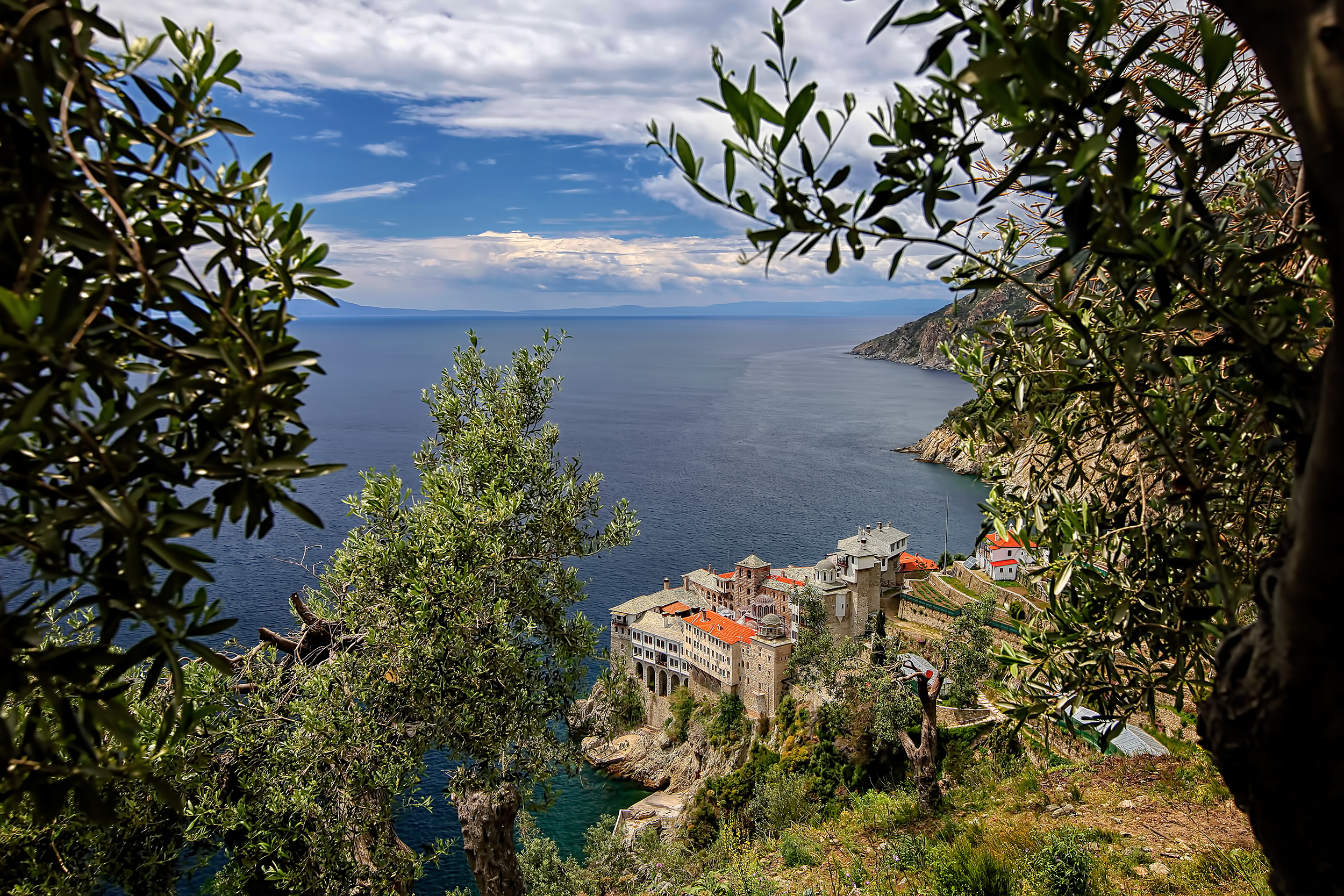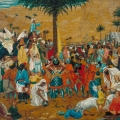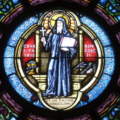“I Am the Only Woman Here”
According to tradition, these words were spoken by the Virgin Mary herself when Empress Pulcheria, sister of Theodosius II, attempted to visit Mount Athos. Her presence would have violated the avaton, the strict prohibition barring women from entering this monastic enclave—the most impenetrable in Europe. The restrictions do not apply solely to women; for centuries, non-Christians were also forbidden, and until two decades ago, Catalans were explicitly denied entry.
In the north-easternmost part of Greece, Mount Athos juts into the deep blue waters of the Aegean, a place where geography and monastic tradition have fused into an enduring way of life. Here, the rules of the outside world fade away, replaced by those of a society shaped by spiritual discipline and historical continuity.
A Place of Myth and Antiquity
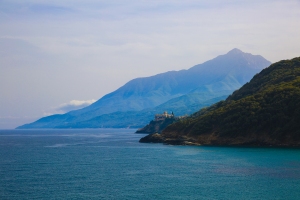
Long before Mount Athos became the center of Orthodox monasticism, it held a significant place in ancient Greek mythology and history. According to legend, Athos was a giant who, during the Gigantomachy, hurled a massive rock at Poseidon. The stone fell into the Aegean, forming the peninsula known today as Athos. Another version suggests Poseidon himself used the mountain to bury the defeated giant.
References to Mount Athos appear in The Iliad and in the works of Herodotus, who noted its strategic importance during the Persian invasions. Ancient geographers such as Strabo recorded that the region, then called Acte, was home to several Greek cities, including Dion, Cleonae, Thyssos, Olophyxos, and Acrothoï—some of which minted their own coinage.
After the death of Alexander the Great, his architect Dinocrates proposed an ambitious project: carving Mount Athos into a colossal statue of the Macedonian ruler, with one hand holding a city and the other a basin collecting water from a river. Though never made, the idea shows the symbolic weight the mountain carried in the Hellenic imagination.
The “Garden of the Virgin”: A Monastic Origin Story
How did Mount Athos become a retreat for Christian ascetics? Orthodox tradition recounts that the Virgin Mary, sailing to Cyprus to visit Lazarus, was caught in a storm that forced her vessel to land on the Athonite peninsula. Enchanted by its rugged beauty, she is said to have prayed:
“May this land be your inheritance and your garden, a spiritual refuge for those seeking salvation.”
According to tradition, Christ granted her request, and ever since, Mount Athos has been known as the “Garden of the Virgin.” Symbolically, she is the only woman permitted within its borders, reinforcing the sacred nature of the avaton and the monks’ devotion to Mary as their spiritual guide and protector.
Athanasius of Athos: Architect of the Monastic Republic

While the legend of the Virgin Mary “sanctified” Mount Athos, it was Athanasius of Athos who established its monastic framework. In 963 CE, he founded the Great Lavra Monastery, laying the foundation for the Athonite monastic community.
Before Athanasius, the mountain had been a haven for hermits living in extreme solitude, devoted to prayer and contemplation. His model introduced cenobitic monasticism, emphasizing communal living, collective prayer, manual labor, and scriptural study.
With the backing of Byzantine Emperor Nikephoros II Phokas, his close friend and patron, Athanasius built the Great Lavra with imperial funding. It became the most influential monastery on Mount Athos and a model for others across the peninsula.
Today, his legacy endures in the architecture of the monasteries, the echoes of Byzantine chants, and the strict spiritual discipline that has shaped Mount Athos for over a thousand years
A Landscape of Isolation
Mount Athos is the easternmost of the three peninsulas of Chalkidiki. It stretches approximately 50 kilometers and is crowned by the peak of Mount Athos itself, rising 2,033 meters above sea level—a natural sentinel that has witnessed the rise and fall of empires.
Scattered along its slopes are 20 Orthodox monasteries, some clinging to precipitous cliffs, others hidden within dense forests of pine, cypress, and oak. Alongside these monastic centers lie an intricate network of hermitages, sketes (small monastic communities), and solitary cells, where monks live in near-complete seclusion.
The landscape is a striking interplay of raw nature and sacred architecture—mountains plunging into the sea, ancient footpaths winding through olive groves and orchards, and the ever-present sound of wind murmuring through monastic courtyards.
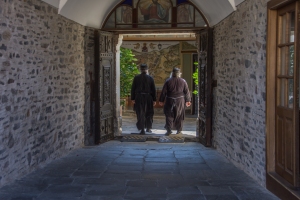
A World Beyond Time
Mount Athos is not only set apart by its laws and traditions but also by its very own perception of time and space. Access is exclusively by sea from the port of Ouranoupoli, turning the journey into a rite of passage.
Within its borders, time follows a different rhythm. The monks adhere to the Julian calendar, which lags 13 days behind the Gregorian calendar used elsewhere. In some monasteries, the day begins at sunset rather than midnight, echoing a cyclical view of time aligned with the rhythms of nature. Life is structured around canonical hours, dividing the day and night into periods of prayer, labor, and rest.
This temporal and geographic isolation creates an environment where history seems suspended, and spirituality remains the guiding force of daily life.
The Avaton and Other Regulations
Women are strictly forbidden from entering Mount Athos. The avaton rule extends beyond human visitors, excluding most female animals as well. However, a few practical exceptions exist:
- Cats: Allowed for pest control, preventing rodents from damaging manuscripts and food stores.
- Laying hens: Permitted for egg production, an essential part of the monastic diet.
By contrast, no female cattle or goats are found on the peninsula, influencing the monks’ dietary habits. They abstain from fresh animal milk and, following Orthodox fasting traditions, refrain from consuming meat. Their diet is primarily plant-based, supplemented with fish and seafood.
Strict fasting rules govern their eating habits, with over half the year dedicated to dietary restrictions that exclude animal products, including eggs and dairy. These fasting periods serve as a form of spiritual discipline, reinforcing the monks’ ascetic commitment.
Until 2005, Catalans were barred from entering Mount Athos due to a historical grievance: in the 14th century, Catalan mercenaries looted the monasteries, leaving a legacy of mistrust that endured for centuries.
A Realm of Mystery
Walking through Mount Athos is like traversing a living tapestry of legend and tradition. Some monks, it is said, have reached such spiritual purity that their bodies remain incorrupt after death. Byzantine chants resonate through ancient walls, and deep in the forests, hermits dwell in complete solitude, untouched by the outside world.
Mount Athos is more than a place—it is a symbol of spiritual resilience, a beacon of tradition in a world that is constantly shifting. A land where history, devotion, and mystery intertwine, defying the passage of time.



